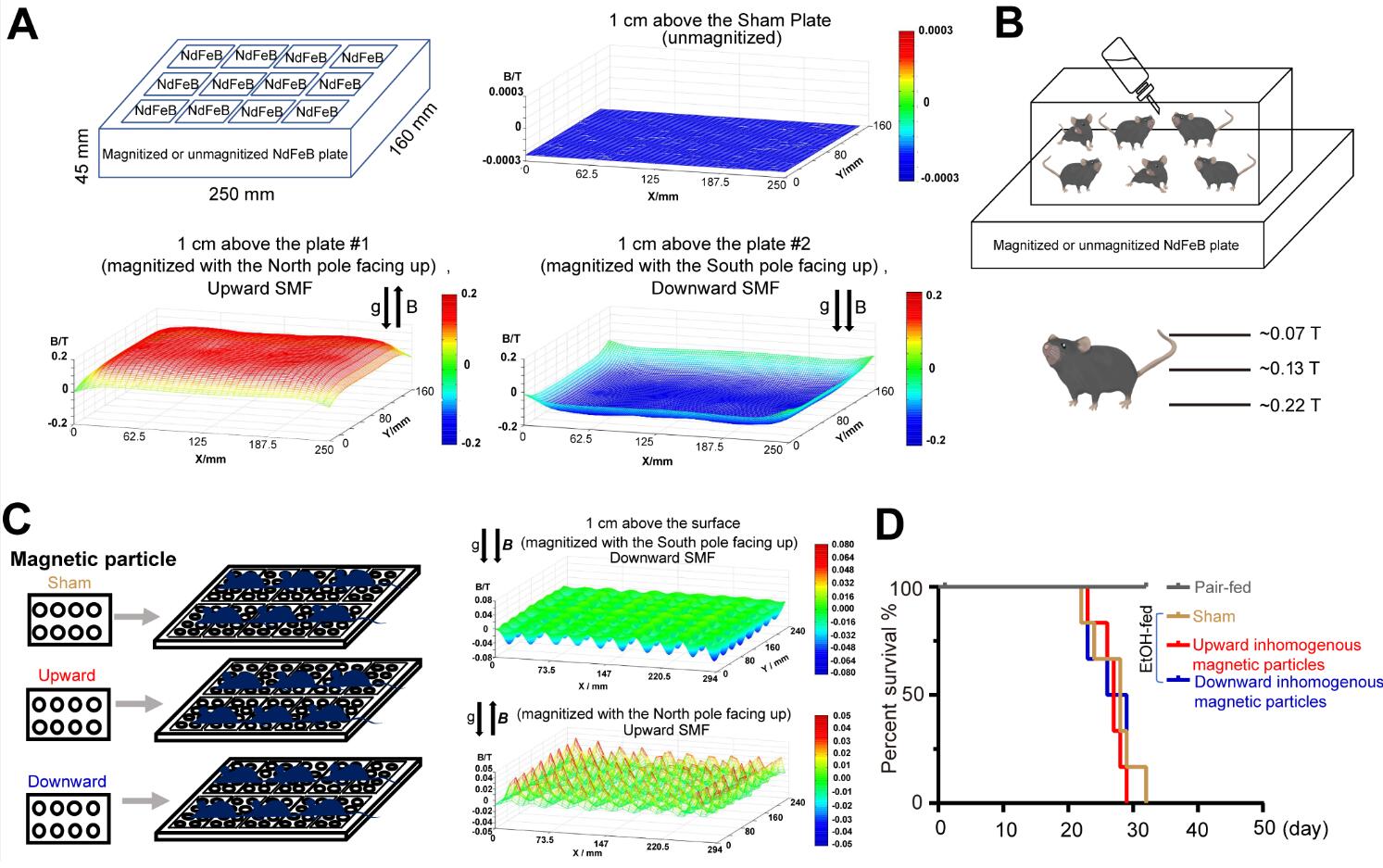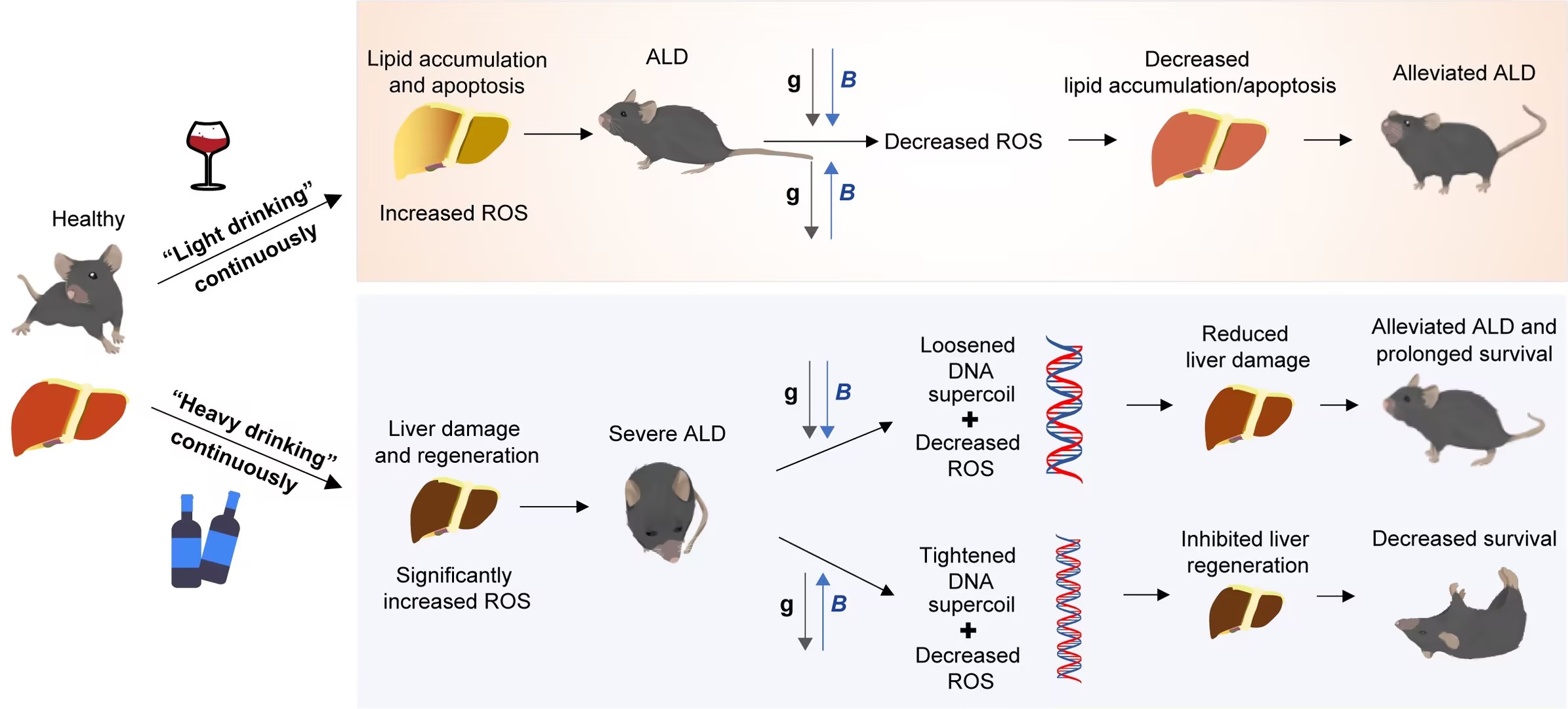
--Research Reveals the Impact of Magnetic Fields on Liver Health in Alcohol-Fed Mice
According to a work recently published in Research, Prof. ZHANG Xin and her research group from the High Magnetic Field Laboratory, Hefei Institutes of Physical Science (HFIPS) of Chinese Academy of Sciences (CAS), found that long-term exposure to moderate static magnetic fields (SMFs) can generate obvious effects on liver regeneration and oxidative stress in alcohol-fed mice.
The findings suggest that the ~0.1-0.2 T SMF parallel to the gravity direction alleviated alcoholic liver disease, while the SMF antiparallel to gravity direction increased liver damage and accelerated death in "heavy drinking" mice. In contrast, weaker SMFs had no such effects.
This work was recently published in Research.
Alcoholic liver disease (ALD) is a prevalent chronic liver disease caused by excessive alcohol consumption, encompassing various conditions such as alcoholic fatty liver, hepatitis, liver fibrosis, and cirrhosis. With alarming statistics indicating a rapid increase in the ALD population, affecting approximately 62 million people in China alone, it has become a pressing social and economic burden.
SMFs have gained attention as a non-invasive physical tool due to their high penetration capability and ease of use. Previous studies have demonstrated the biosafety of SMFs, particularly in healthy volunteers or mice. However, there remains a scarcity of safety studies focusing on pathological models.
In this study, the researchers investigated the effects of SMFs on ALD in mice. They exposed mice continuously fed with an alcohol liquid diet to SMFs of varying directions and intensities. The SMFs applied were approximately 0.1-0.2 Tesla (T), with two different directions: parallel and antiparallel to the direction of gravity. The alcohol doses administered to the mice were categorized as "light drinking" (1-3% alcoholic diet for 3 weeks) and "heavy drinking" (1-6% alcoholic diet for 6 weeks).
The results demonstrated that both SMF directions reduced inflammation, oxidative stress, fat accumulation, and apoptosis in liver cells of the "light drinking" mice. Notably, the downward SMF direction exhibited a more significant effect on improving these parameters. Intriguingly, while the downward SMF increased the survival time of the "heavy drinking" mice, the upward SMF caused substantial liver damage and shorter survival time. Conversely, weaker non-uniform SMFs provided by magnetic particles (ranging from 0 to 20 millitesla) did not exhibit similar effects.
These findings highlight the potential of prolonged exposure to moderate SMFs as a therapeutic approach for ALD. The study underscores the importance of considering specific SMF parameters, such as intensity and direction, when investigating magnetic bioeffects. Further research is necessary to elucidate the underlying mechanisms and to explore the translational possibilities for human patients.
This work contributes to the growing body of knowledge regarding the impact of SMFs on liver health. As the understanding of this field expands, it may pave the way for novel treatments or interventions to alleviate the burden of ALD, ultimately offering hope to millions of individuals affected by this challenging condition.

Schematic diagram and magnetic field distribution of SMFs provided by magnetic plates and magnetic particles. (Image by ZHANG Xin)

Moderate static magnetic fields affect alcoholic liver disease. (Image by ZHANG Xin)